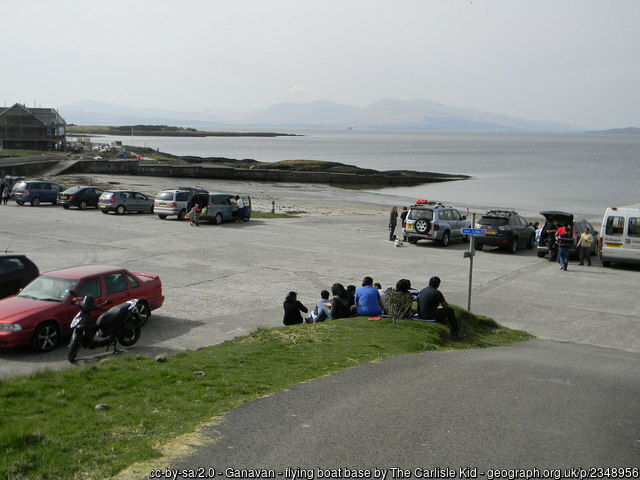Oban (Ganavan Sands)
| Also known as: | Ardantrive Bay / Ganavan / Isle of Kerrera / Kerrera / Oban Bay / RAF Oban / RAF Station, Oban |
| County: | Argyll and Bute |
| Current Status: | Harbour / Housing / Leisure activity / Marina |
| Date: | 2 October 1939 (occasional use from 1928) - 1 February 1946 |
| Current Use: | Disused |
| Used By: | RAF / RAF (Norwegian) / RAAF / RCAF |
| Landing Surface Types: | Water |
| Aircraft Roles: | Maritime patrol / Trainer |
Oban Bay and the stretch of water between the town and island of Kerrera provided good conditions for flying boat operations, with long take-off and landing runs. RAF flying boats first occasionally used the area from 1928, being supplied with moorings, such as a Flight of Supermarine Southampton flying boats of No 201 Squadron visiting in the summer of 1931. Oban’s rail and road infrastructure meant that it was a suitable location for a more permanent location for flying boats on the north-west coast.
The airfield opened as a full RAF station in the autumn of 1939 and almost immediately saw the arrival of No 209 Squadron with Supermarine Stranraers and later Saunders-Roe Lerwicks. After these extremely poor aircraft moved to Pembroke Dock in July 1940 they were replaced with Short Sunderlands of No 210 Squadron, and subsequently Nos 228 and the Canadian 423 Squadrons. These squadrons were able to operate long distance maritime patrols over the Atlantic, countering the U-boat threat to vital supply routes. Other Canadian and Norwegian units also operated Consolidated Catalinas and Sunderlands from Oban between 1942 and 1943, as well as the Australians of No 10 Squadron being detached to the site in 1940 and 1941 from Mount Batten near Plymouth. A more unusual unit towards the end of 1943 became No 524 Squadron that formed to use the Martin Mariner, but this American flying boat did not find favour with the RAF and so the squadron rapidly disbanded.
Having transferred to No 17 Group in July 1943, this airfield saw No 302 Ferry Training Unit (FTU) carry out training for crews that would go on to fly Catalinas and Sunderlands to where they were needed overseas. The site was put under Care and Maintenance in April 1945, once the FTU had moved to Killadeas in Northern Ireland, and all RAF involvement had effectively ended by the early months of 1946.
The site was split into three, with slipways still surviving on Kerrera Island and the mainland at Ganavan Sands where maintenance was carried out; aircraft were often dispersed in Oban Bay. A few other buildings also still remain, while many hotels on the seafront were also requisitioned. Another hotel today at Dungallan House served as the Station HQ.
The following organisations are either based at, use and/or have at least potentially significant connections with the airfield (as at 01/07/2013):
- Oban Community Council
- Oban Library
- Oban Marina
- Oban War & Peace Museum
- Pennyfuir Cemetery
- RAF Oban
Notable Past Associated Organisations:
- Alexandra Hotel
- Dungallan House
- Great Western Hotel
- Marine Hotel
Main unit(s) present:
-
No 4 Flying Boat Servicing Unit
- No 10 Sqn RAAF
-
No 209 Sqn
-
No 210 Sqn
-
No 228 Sqn
-
No 302 FTU
-
No 330 Sqn
-
No 422 Sqn
-
No 423 Sqn
-
No 524 Sqn
Photographs of ABCT's Oban Airfield memorial unveiling, Saturday 16 July 2022. Courtesy of Jock and Diana Douglas, with thanks too to Tim Vollum
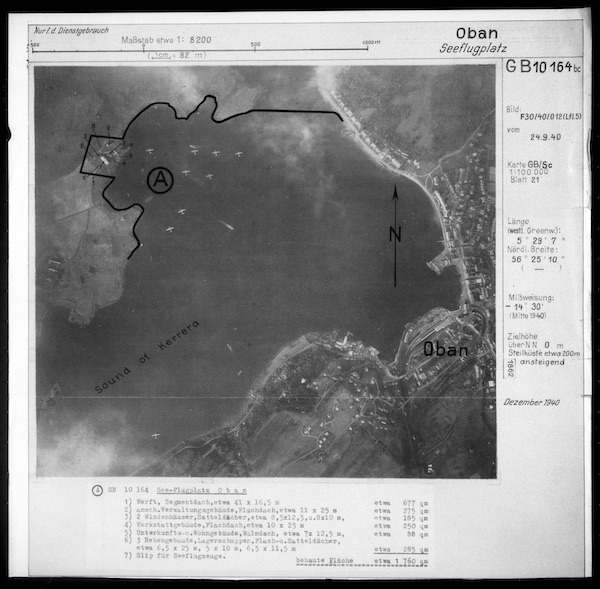
Luftwaffe aerial photograph of Oban and the flying boat base, 1940. © HES (Luftwaffe: Aerial Reconnaissance (Scotland)). Licensor canmore.org.uk

Aerial view centred on the remains of the seaplane base and the boatyard, taken from the south-east, 27 June 2006. © Crown Copyright: HES. Licensor canmore.org.uk
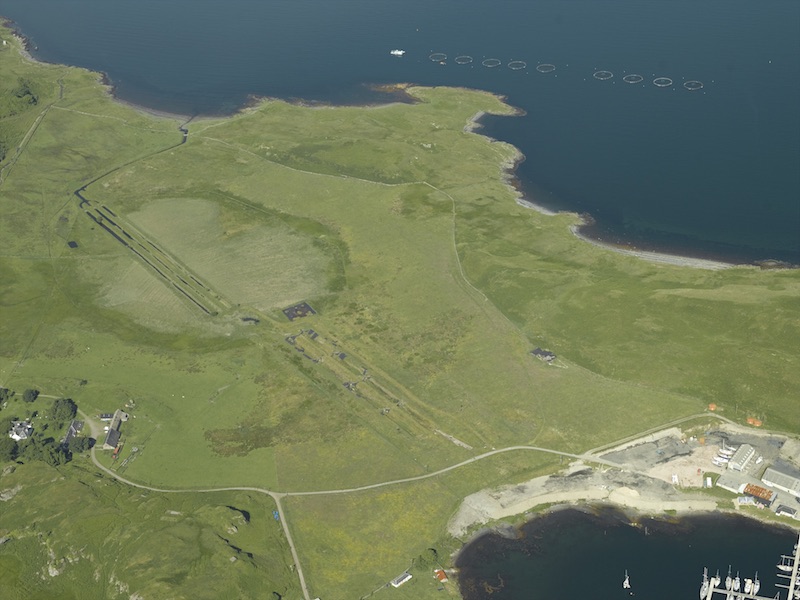
Aerial view centred on the remains of the seaplane base and the boatyard, taken from the east-south-east, 27 June 2006. © Crown Copyright: HES. Licensor canmore.org.uk

Aerial view centred on the remains of the seaplane base and the boatyard, taken from the south-south-west, 26 April 2007. © Crown Copyright: HES. Licensor canmore.org.uk

Aerial view centred on the remains of the seaplane base and the boatyard, taken from the south-south-east, 26 April 2007. © Crown Copyright: HES. Licensor canmore.org.uk
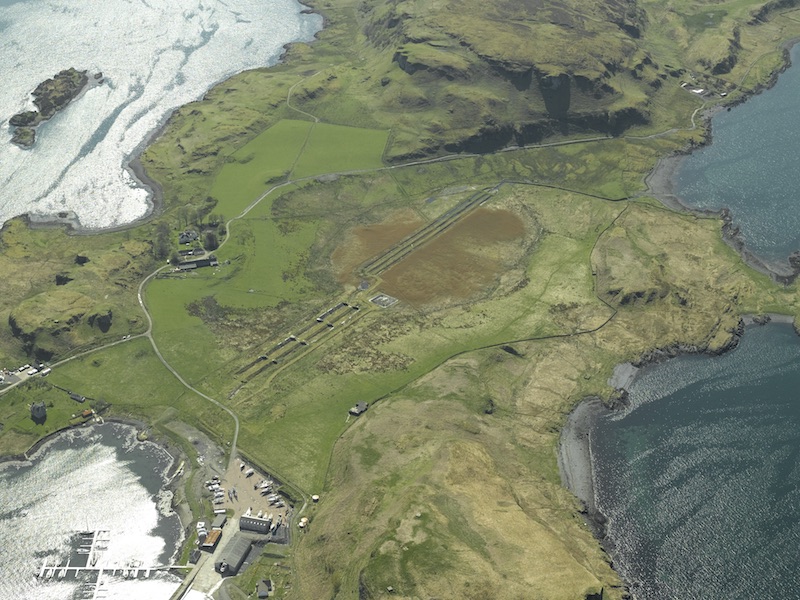
Aerial view centred on the remains of the seaplane base and the boatyard, taken from the north-north-east, 26 April 2007. © Crown Copyright: HES. Licensor canmore.org.uk
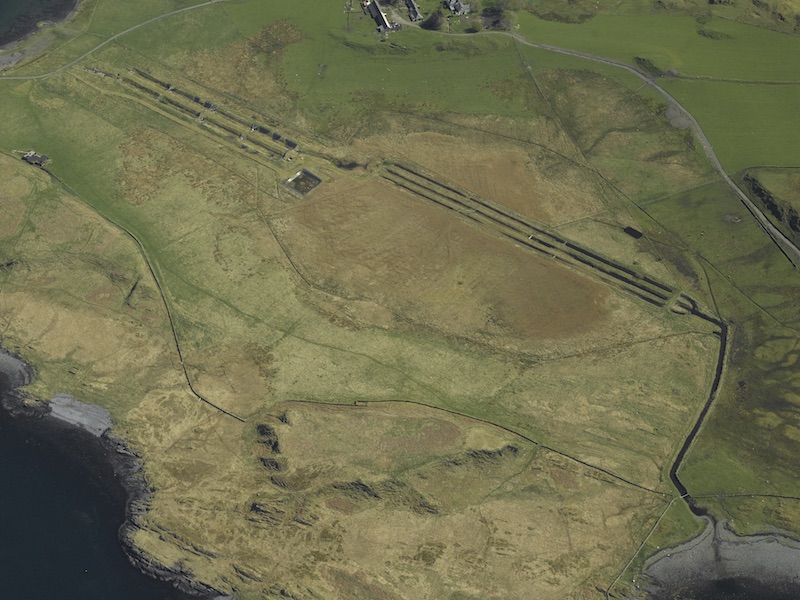
Aerial view centred on the remains of the seaplane base and the boatyard, taken from the north-west, 26 April 2007. © Crown Copyright: HES. Licensor canmore.org.uk
